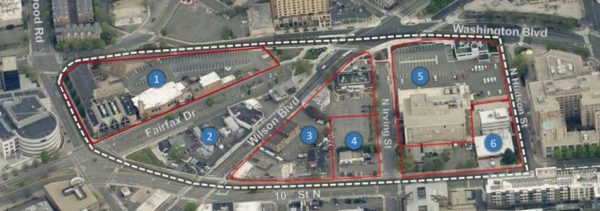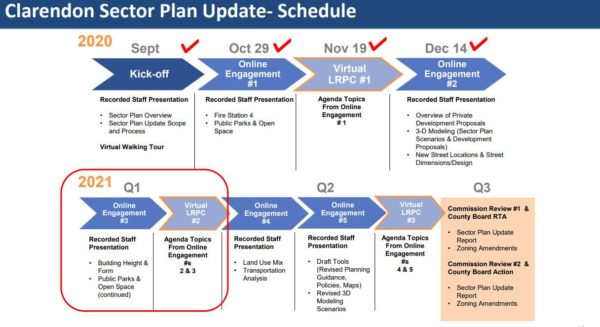 Making Room is a biweekly opinion column. The views expressed are solely the author’s.
Making Room is a biweekly opinion column. The views expressed are solely the author’s.
Development planning in Arlington is guided by the idea that density is a burden which must be paid for with public benefits.
If a property owner wants to add more units to their planned apartment building that they are allowed ‘by-right,’ they must also fund something off the community’s wish list. But if the price of this is too high, the community loses both new homes AND the improved urban space.
We see this dynamic at play with the Clarendon Sector Plan. Most recently amended in 2006, the Sector Plan sets forth a vision of the “urban village” where “people of all income levels, ages and household make-ups can walk to home, work, shop, and play.”
Fifteen years later, some items on the community’s “wish list” haven’t come through. Large blocks south of Washington Boulevard remain half-used parking lots. No parks have been added. Cars still reign supreme. The goal of relocating Fire Station 4 has not been achieved. The Sector Plan does not allow enough density and height to fully maximize the community benefits these sites could provide.
A Sector Plan guides the private development around Arlington’s Metro stations, establishing the density, height, and uses of future buildings, and lays out the community features (affordable housing, LEED building certification, parks, improved streetscapes, etc.), that new developers will provide if they want to “buy” additional density. It can be specific, including where a new road should break up a superblock and which blocks should have a hotel vs. retail or office space.
The Sector Plan implements Arlington’s Comprehensive Plans, specifically the General Land Use Plan (GLUP), which “establishes the overall character, extent and location of various land uses.”
Sector Plans are visions of what a community wants but has almost no power to realize. The fulfillment is left up to the development process. In the update to the Clarendon Sector Plan now underway, County staff and community members hope to create the right recipe to achieve their urban vision. Private development could transform these empty parking lots into vibrant streetscapes and buildings for people to live, work, and stay, all within a short walk of the Metro.
But before these planned developments can even begin their long process toward approval by the County Board, they need amendments to the Sector Plan. The projects need taller heights and steeper building tapers than what the 2006 Sector Plan calls for. Additionally, they need to shift the location of the desired new street (“10th Road”) and the owner of the Silver Diner site wants to redevelop their property as a hotel rather than an office building as the Sector Plan indicates.
Over the coming months, participants will determine how they can “advance the sector plan’s vision” with new “guidance and zoning for private development.” These changes will hopefully allow Clarendon to replace more parking lots with residential and commercial buildings, offering more productive uses of our scarce urban land. But the Sector Plan process also reveals the central flaw in our development planning.
In the short term, you should participate in the Clarendon Sector Plan process to allow more height and density in these blocks south of Washington Boulevard to maximize the direct and indirect benefits to the broader community.
In the longer term, Arlington should rethink the development process that treats new housing or office space as a problem that must be mitigated through expensive public benefit projects. By funding public improvements through fees from new development, the costs end up borne almost exclusively by renters and new buyers, rather than on the whole community.
Instead, we should make it easier to build homes and offices and use general revenue to pay for community needs. Funding infrastructure and amenities through property taxes, or better yet a land value tax, would put urban improvements in the hands of citizens, rather than leaving them to the whims of the development process.
Jane Fiegen Green, an Arlington resident since 2015, proudly rents an apartment in Pentagon City with her family. By day, she is the Membership Director for Food and Water Watch, and by night she tries to navigate the Arlington Way. Opinions here are her own.



